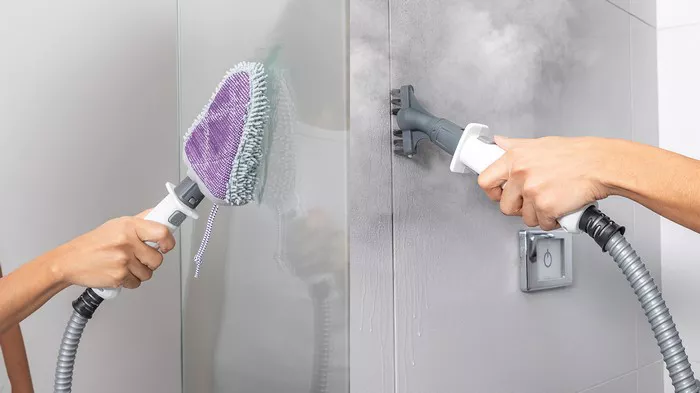Steam cleaners have become increasingly popular for their efficiency and eco-friendly cleaning capabilities. They use high-temperature steam to clean and sanitize various surfaces, making them a versatile tool for homeowners and professionals alike. However, while steam cleaners can tackle many cleaning tasks, there are certain surfaces and items that should not be cleaned using this method. Understanding what you cannot clean with a steam cleaner is crucial to avoid damaging surfaces or compromising safety.
What Can You Not Clean with a Steam Cleaner
1. Delicate Fabrics and Materials
Delicate fabrics and materials such as silk, velvet, and some types of wool are not suitable for steam cleaning. The high temperature and moisture produced by steam cleaners can damage these fabrics, causing shrinkage, color bleeding, or distortion of the fibers. Instead, these materials should be cleaned using gentle methods such as dry cleaning or hand washing.
2. Unsealed Wooden Surfaces
While steam cleaners are effective for cleaning sealed hardwood floors, they should not be used on unsealed wooden surfaces. Unsealed wood can absorb moisture, leading to warping, swelling, and damage to the finish. It’s essential to check the manufacturer’s recommendations for your specific type of wood flooring or furniture before using a steam cleaner. If in doubt, opt for a safer cleaning method such as dusting or using a wood-safe cleaner.
3. Electronics and Electrical Appliances
Steam and electronics don’t mix well. Using a steam cleaner on electronic devices, such as computers, televisions, or kitchen appliances, can cause irreparable damage and pose a safety hazard. The moisture from steam can short-circuit electronics, leading to malfunctions or even electrical fires. Instead, use specialized electronic cleaning products or gentle wipes recommended by the manufacturer to clean and sanitize these items.
4. Painted Surfaces
While steam cleaners are excellent for removing dirt and grime from many surfaces, they can damage painted surfaces. The heat and moisture can soften or dissolve paint, leading to peeling, bubbling, or discoloration. Avoid using a steam cleaner on painted walls, furniture, or other painted surfaces. Instead, opt for gentle cleaning methods such as wiping with a damp cloth or using a mild detergent solution.
5. Antique or Fragile Furniture
Antique furniture or pieces made from fragile materials such as glass or porcelain should not be subjected to steam cleaning. The high temperature and pressure of steam can weaken glue joints, cause cracking, or damage delicate finishes. When cleaning antique or fragile furniture, it’s best to use a soft cloth or brush and mild cleaning solutions appropriate for the material.
6. Grout and Caulk
While steam cleaners can effectively clean tile surfaces, they are not suitable for cleaning grout and caulk. The high pressure of steam can dislodge or damage grout and caulk, leading to leaks or gaps in your tiles. Instead, use a grout brush and specialized grout cleaner to remove dirt and grime from these areas. For maintenance, regular scrubbing with a mild cleaner can help keep grout and caulk clean without risking damage.
Conclusion
While steam cleaners are versatile tools for cleaning and sanitizing many surfaces, it’s essential to know their limitations. Certain materials and surfaces are not suitable for steam cleaning and can be damaged or compromised if subjected to high temperatures and moisture. By understanding what you cannot clean with a steam cleaner and using alternative cleaning methods when necessary, you can ensure the longevity and safety of your belongings and surfaces.
FAQs
Q1: Can I use a steam cleaner on my car’s upholstery?
A1: No, it’s not recommended to use a steam cleaner on car upholstery, especially if it’s made of delicate fabrics like suede or leather. The high temperature and moisture can damage the upholstery and affect its appearance and durability. Instead, use specialized car upholstery cleaners and follow the manufacturer’s instructions for best results.
Q2: Is it safe to use a steam cleaner on laminate flooring?
A2: While laminate flooring is more resistant to moisture than hardwood, it’s still not advisable to use a steam cleaner on it. The steam can seep into the seams and edges of the laminate planks, causing them to swell or warp. It’s best to use a damp mop or a laminate floor cleaner recommended by the manufacturer to maintain the cleanliness of laminate flooring.
Q3: Can I steam clean my mattress to sanitize it?
A3: While steam cleaning can effectively sanitize mattresses by killing dust mites and bacteria, it’s essential to check the manufacturer’s recommendations first. Some mattresses may not be suitable for steam cleaning, especially if they have memory foam or other sensitive materials that can be damaged by moisture and heat. If steam cleaning is safe for your mattress, be sure to allow it to dry thoroughly before using it again.
By adhering to these guidelines and using common sense, you can maximize the effectiveness of your steam cleaner while protecting your belongings and surfaces from potential damage. Always consult the manufacturer’s recommendations and exercise caution when cleaning sensitive or delicate items.

